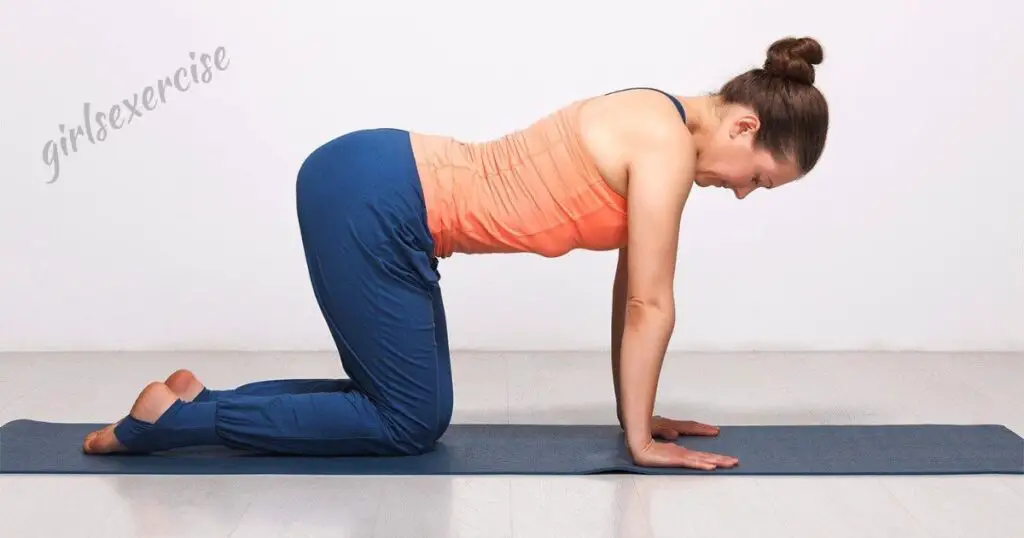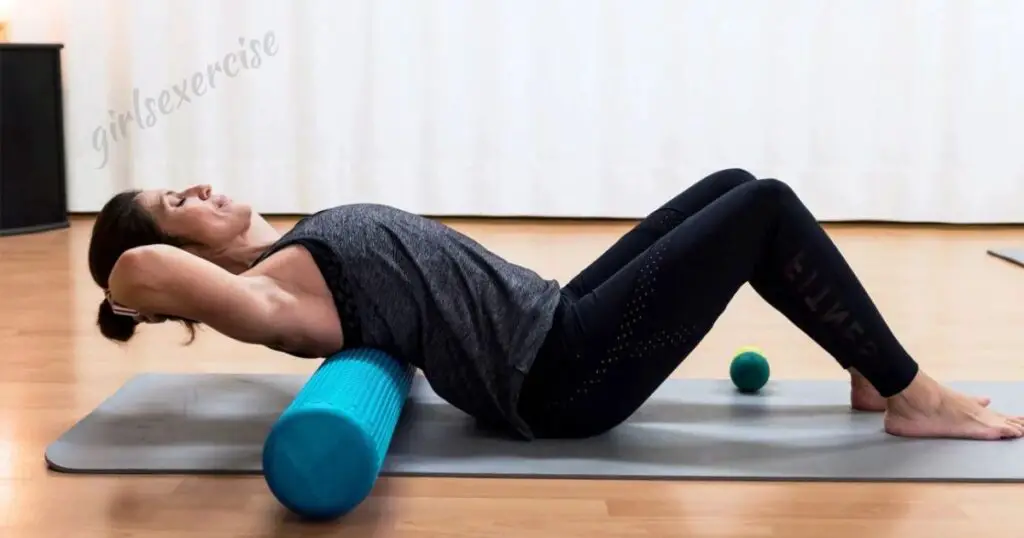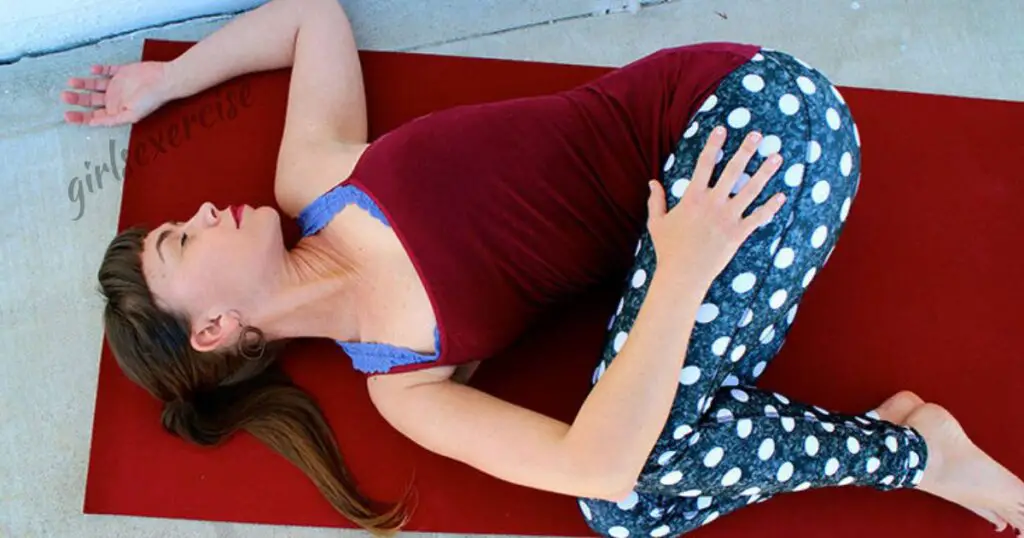In the intricate tapestry of holistic wellness, the focal point emerges yoga for back pain. This ancient practice transcends mere physical exercise, weaving together breath, movement, and mindfulness to address the nuances of back discomfort.
It becomes a transformative journey, not just for the body but the entire being. Yoga serves as an intricate key, unlocking the body’s innate ability to heal and rejuvenate.
Delving into the intricacies of yogic principles tailored for back pain illuminates a path toward relief that extends beyond the superficial. Let’s navigate this enlightening journey, unraveling the layers of wisdom embedded in yoga’s profound impact on alleviating and preventing back pain.
Understanding the Science Yoga’s Impact on Back Pain:

Biomechanics and Alignment in Yoga Poses
Yoga’s effectiveness in addressing back pain lies in its intricate alignment principles. Asanas (poses) are meticulously crafted to engage and strengthen core muscles while promoting spinal alignment.
Each pose, from the gentle cat-cow to the more dynamic downward-facing dog, targets specific muscle groups, alleviating tension and enhancing flexibility. For instance, the cat-cow sequence gently mobilizes the spine, promoting its flexibility and relieving stiffness, while the downward-facing dog stretches the entire posterior chain, releasing tension in the back.
Neurological Effects: Stress Reduction and Pain Perception
Beyond physical movements, yoga emphasizes mindfulness and breath control, impacting the nervous system’s response to pain. Through deep breathing techniques and meditation, the body enters a relaxed state, reducing the production of stress hormones like cortisol.
This shift not only eases muscle tension but also alters pain perception. Studies show that regular yoga practice can modify brain activity related to pain, decreasing the intensity of perceived discomfort.
Understanding these scientific underpinnings illuminates how yoga acts as a comprehensive therapy for back pain. Its combination of physical alignment, muscle engagement, and neurological effects synergistically contribute to its efficacy in mitigating and preventing back issues.
Mindfulness and Pain Management
The mind-body connection forms the cornerstone of yoga’s holistic approach to healing. Integrating mindfulness practices within yoga sessions cultivates awareness of the body’s sensations.
By directing attention to the present moment, individuals gain a deeper understanding of their pain, enabling them to respond rather than react. Techniques like body scanning meditation allow practitioners to observe and release tension in specific areas of the back, fostering relaxation and pain relief.
Emotional Well-being and Stress Reduction
Chronic back pain often intertwines with emotional stress. Yoga’s emphasis on emotional well-being becomes pivotal in addressing these intertwined aspects.
Practices like yoga nidra, a guided meditation, promote deep relaxation, reducing anxiety and enhancing overall mental health. As stress diminishes, the body’s capacity to heal and manage pain improves significantly.
This holistic perspective acknowledges the interconnectedness of physical discomfort and emotional well-being. Yoga emerges not just as a set of physical exercises but as a comprehensive system that nurtures the body, mind, and spirit, offering a profound approach to alleviating and managing back pain.
Tailored Yoga Practices Customized Routines for Back Pain Relief:

Precision in Pose Selection: Targeting Specific Areas of Discomfort
Crafting a yoga routine tailored for back pain relief requires a nuanced understanding of the spine’s intricacies. Yoga instructors and practitioners alike delve into poses that specifically target affected areas, addressing issues with precision.
Poses like Child’s Pose gently stretch the lower back, providing relief to tight muscles. The Sphinx Pose engages the lumbar spine, promoting strength and flexibility. Tailoring these poses to an individual’s needs involves considering factors such as the nature of the pain, the degree of flexibility, and any pre-existing conditions.
Progressive Sequencing: Building Strength Gradually for Lasting Relief
Effective back pain relief through yoga involves a strategic progression of poses. Starting with gentle stretches and foundational poses establishes a solid base, gradually advancing to more complex asanas.
For instance, the progression from Cat-Cow to Cobra Pose builds flexibility and strength in the spine. This careful sequencing minimizes the risk of strain or injury, ensuring a sustainable practice.
Understanding the biomechanics of each pose aids in creating a sequence that not only provides immediate relief but also contributes to long-term back health. Tailoring yoga practices for back pain relief is an art that blends knowledge of anatomy, expertise in yoga principles, and a personalized approach.
By customizing routines to address specific discomfort and gradually advancing the complexity, individuals can experience not just temporary relief but also build the foundation for lasting resilience against back pain.
Mind-Body Connection Yoga’s Impact on Pain Perception:

Embracing Mindfulness: Redefining the Perception of Pain
Yoga transcends physical movement; it delves into the intricate relationship between the mind and the body. At its core, yoga emphasizes mindfulness—a state of heightened awareness and focus on the present moment.
By integrating mindfulness practices into yoga sessions, individuals develop a profound understanding of their body’s sensations, including pain. Through mindful breathing techniques and meditation, practitioners learn to observe sensations without judgment, altering their response to discomfort.
Neurological Reshaping: Reducing Pain Sensitivity
Scientific studies showcase yoga’s transformative impact on the brain’s response to pain. Regular practice stimulates neural pathways associated with pain modulation and stress reduction. This leads to reduced pain sensitivity and enhanced tolerance.
Neuroplasticity, the brain’s ability to reorganize and form new connections, comes into play. As practitioners engage in yoga and meditation, the brain rewires itself, diminishing the intensity of perceived pain.
This neurological reshaping fosters a more adaptive response to discomfort, promoting a sense of control and resilience. Understanding the mind-body connection elucidates the power of yoga beyond physical movements.
It serves as a gateway to reframe the experience of pain, empowering individuals to navigate discomfort with a newfound perspective.
Stress Reduction and Pain Management: Unraveling the Interconnectedness
Chronic pain often intertwines with heightened stress levels. Yoga, with its stress-reducing techniques, becomes a potent tool for managing both physical discomfort and emotional strain.
Practices such as guided relaxation, yoga nidra, and progressive muscle relaxation induce the relaxation response, alleviating stress-related physiological responses. By reducing stress, the body’s overall pain perception diminishes, allowing individuals to better manage and cope with their discomfort.
Moreover, stress reduction through yoga promotes healing on a cellular level. Studies suggest that relaxation techniques incorporated in yoga practices influence gene expression, positively impacting immune function and inflammation levels.
This holistic approach not only addresses the symptoms of pain but also aids in addressing its underlying causes. Understanding the intricate interplay between stress, pain perception, and yoga elucidates its profound impact on holistic well-being.
By nurturing the mind-body connection, yoga becomes a transformative practice that empowers individuals to redefine their relationship with pain, fostering resilience and enhancing overall quality of life.
Scientific Validation Research and Studies on Yoga’s Efficacy:

Clinical Trials: Unveiling Yoga’s Impact on Back Pain Management
Scientific inquiry into yoga’s efficacy as a complementary therapy for back pain has yielded compelling results. Rigorous clinical trials and studies scrutinize the effects of yoga on pain intensity, functional mobility, and overall well-being.
Research consistently demonstrates that regular yoga practice significantly reduces chronic back pain. Studies compare yoga interventions against conventional treatments or control groups, revealing their superiority in alleviating discomfort and enhancing physical function.
Biomechanical Insights: Understanding the Mechanisms Behind Relief
Beyond clinical trials, biomechanical investigations unravel the intricate mechanisms through which yoga mitigates back pain. These studies delve into the changes occurring in muscle activation, spinal alignment, and flexibility due to yoga practice.
For instance, research highlights how specific yoga poses engage core muscles, promoting stability, and reduce the load on the spine, consequently alleviating discomfort. Understanding these biomechanical nuances elucidates why certain yoga practices effectively address back pain.
Scientific validation through empirical evidence and biomechanical analyses underscores yoga’s credibility as a therapeutic modality for managing back pain.
Neuroscientific Findings: Mapping Yoga’s Effects on the Brain
Advancements in neuroimaging techniques have opened windows into the brain’s response to yoga. Functional MRI studies reveal alterations in brain regions associated with pain processing and emotional regulation after regular yoga practice.
These changes correlate with reduced pain perception and improved emotional well-being. Neuroscientific evidence not only validates the subjective experiences reported by practitioners but also provides tangible evidence of yoga’s neurological impact in mitigating back pain.
Understanding the depth of scientific validation empowers individuals seeking relief from back pain to trust in yoga as a credible and evidence-based approach.
The convergence of clinical trials, biomechanical insights, and neuroscientific findings solidifies yoga’s position as a scientifically validated method for managing and alleviating back discomfort.
Incorporating Yoga into Daily Life Building a Sustainable Practice:

Redefining Routine: Integrating Yoga Seamlessly
Incorporating yoga into daily life transcends the mat—it’s about weaving the essence of yoga into routine activities. Simple mindfulness practices, like conscious breathing during daily chores or maintaining proper posture while sitting, infuse moments with mindfulness.
By integrating these mindful moments into everyday tasks, individuals gradually cultivate a sense of mindfulness and body awareness, making yoga an inherent part of their lifestyle.
Customization and Consistency: Tailoring Practice to Individual Needs
Building a sustainable yoga practice involves tailoring it to individual preferences and needs. Understanding personal limitations, preferences for specific yoga styles or poses, and time constraints helps in creating a practice that feels both accessible and enjoyable.
Whether it’s a short morning sequence or an evening relaxation routine, consistency is key. Developing a routine that aligns with one’s lifestyle ensures a sustainable practice that can be upheld amidst life’s demands.
Holistic Wellness Integration: Yoga Beyond the Mat
Yoga extends far beyond physical postures. Integrating its philosophy—such as the Yamas and Niyamas (ethical guidelines) or principles like Ahimsa (non-violence) and Santosha (contentment)—into daily life amplifies its impact.
This might involve conscious eating habits, nurturing positive relationships, or fostering a sense of gratitude. Incorporating these principles fosters a holistic approach to wellness, not just physically but emotionally and spiritually as well.
Adaptation and Progression: Evolving with Practice
Adaptability within a yoga practice is crucial for its sustainability. As practitioners grow, their needs evolve. Adapting the practice to accommodate these changes—whether it’s modifying poses to suit varying energy levels or exploring different styles—keeps the practice fresh and engaging.
Progression in yoga isn’t just about mastering advanced poses; it’s about inner growth, enhancing self-awareness, and deepening the mind-body connection.
Community and Support: Cultivating a Supportive Environment
Being part of a community or having a support system nurtures consistency in yoga practice. Whether it’s joining group classes, participating in online communities, or practicing with friends or family, a supportive environment fosters accountability and motivation.
Sharing experiences, challenges, and successes creates a sense of camaraderie, inspiring one another to stay committed to the practice.
Mindful Intention: Aligning Practice with Purpose
Intentionality infuses yoga practice with meaning. Setting clear intentions—be it for stress relief, physical fitness, or spiritual growth—anchors the practice. Understanding the ‘why’ behind the practice reinforces commitment and dedication, ensuring that each session becomes purposeful and rewarding.
Self-Care and Rest: Balancing Effort with Restoration
Building a sustainable practice also involves acknowledging the need for rest and recovery. Integrating restorative yoga sessions or incorporating meditation and relaxation practices cultivates balance. Listening to the body’s cues and allowing for periods of rest ensures longevity in the yoga journey.
Mindful Progress Tracking: Celebrating Milestones and Growth
Tracking progress, not just in physical abilities but also in mental and emotional well-being, fosters motivation and dedication. Documenting achievements—whether it’s mastering a new pose, feeling increased flexibility, or experiencing reduced stress levels—serves as a source of inspiration, reinforcing the benefits of the practice.
Reflection and Adaptation: Continuous Learning and Growth
Yoga is a journey of self-discovery and continual learning. Reflecting on the practice—what works, what needs adjustment, and how it impacts daily life—facilitates growth. Embracing this learning process and being open to adapting and evolving ensures that the yoga practice remains dynamic and fulfilling.
Empowerment and Self-Awareness: Embracing Transformation
Ultimately, incorporating yoga into daily life is about empowerment. It’s about recognizing the transformative potential of the practice and its ability to enhance self-awareness. Through this journey, individuals discover their strengths, overcome challenges, and cultivate a profound connection with themselves and the world around them.
Conclusion:
Yoga, as a remedy for back pain, extends beyond physical exercise; it’s a journey toward holistic healing. Its intricate blend of poses, breathwork, mindfulness, and philosophical principles offers a multifaceted approach to alleviating and preventing back discomfort.
By understanding the science behind its impact, tailoring practices for individual needs, and embracing its mind-body connection, yoga becomes a transformative tool in managing and healing back pain.
Incorporating yoga into daily life isn’t merely a practice on the mat; it’s a lifestyle infused with mindfulness, intentionality, and self-care.
When embraced as more than just a physical exercise, but as a holistic approach to well-being, yoga not only relieves back pain but also nurtures a deeper connection with oneself, fostering resilience, balance, and profound healing from within.
Faqs About yoga for back pain:
Can yoga really help alleviate back pain?
Absolutely. Yoga is known for its effectiveness in reducing back pain. Specific yoga poses and sequences target back muscles, enhancing flexibility, and promoting spine alignment, which can alleviate tension and discomfort.
What are the best yoga poses for relieving back pain?
Several poses are particularly beneficial, including Cat-Cow, Child’s Pose, Downward-Facing Dog, Cobra Pose, Bridge Pose, and Sphinx Pose. These poses gently stretch and strengthen back muscles, aiding in pain relief and promoting flexibility.
How frequently should I practice yoga for back pain relief?
Consistency is key. Aim for regular practice, starting with a few sessions per week. Gradually increase frequency as your body adjusts. Even short, daily sessions can be effective in managing and preventing back pain.
Is yoga safe for all types of back pain?
In most cases, yes, but caution is advised. If you have severe or chronic back issues, consult a healthcare professional or a certified yoga instructor before starting any yoga practice. Modifications and specialized poses might be necessary for specific conditions.
Can yoga prevent future back pain?
Yes, yoga can be preventive. Regular practice strengthens core muscles, improves posture, and enhances flexibility, reducing the likelihood of future back pain episodes. It also fosters awareness of body mechanics, aiding in injury prevention.
How long does it take to experience relief from back pain through yoga?
Results vary, but some people experience relief after just a few sessions. Long-term and consistent practice typically yields more sustainable relief. Listen to your body and give it time to adapt and respond to the practice.
Are there specific breathing techniques in yoga that help with back pain?
Yes, deep breathing techniques, such as diaphragmatic breathing or pranayama, can aid in relaxation and stress reduction, which indirectly alleviates back pain. Focusing on slow, deep breaths during yoga practice enhances the mind-body connection, contributing to pain management.



